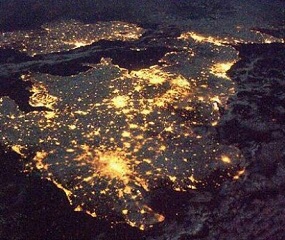 Reducing your carbon footprint and energy bills
Reducing your carbon footprint and energy bills
As we face the realities of population growth, pollution, climate change and the unstoppable rise in energy demand, we need to become more environmentally aware and start to take on the responsibility of reducing our carbon dioxide emissions, whilst reducing our energy bills. We need to use and produce energy that comes from clean renewable sources if we are to survive. We only have one planet’s worth of fossil fuel resources and it is vital that we transform the way the manmade environment is planned, designed, constructed and operated.
Environmental technologies
Environmental technologies are becoming increasingly popular and it is getting easier for the consumer to find the right trained installer to fit and maintain these valuable renewable resources. It is not an old concept; solar photovoltaic, solar thermal panels and other environmental technologies have been around for many years. The British government is committed to reducing carbon dioxide emissions by 20%, and aims to have 20% of the UK’s homes using renewable energy by 2020 – which is no easy task. The new Government’s Green Deal measures will soon be implemented, enabling householders to reduce energy bills and save money, as the UK works through these difficult economic times.
There are a number of different measures that can be taken to ensure your home is more energy efficient. Installing renewable technologies is only half the challenge. You can also consider the ‘fabric first’ approach: adding more wall and loft insulation, fitting thermostats to radiators, turning off televisions and computers rather than leaving them on standby, fitting low energy light bulbs and replacing windows with double or triple glazed glass etc. This will increase the efficiency and cost-effectiveness of your home.
There are a number of UK buildings which have adopted the ‘fabric first’ approach and have installed environmental technologies to achieve emissions targets, helping to meet the needs of our future population.
UK buildings become more energy efficient
London’s Shard, has been designed around the principles of low carbon emission and increased efficiency. It will use around 30 % less energy than other comparable buildings when completed and it will be the tallest building in Western Europe. Some of the green environmental technologies used in its construction include the glass – it is triple glazed, specially laminated and has woven glass fibre solar-controlled blinds integrated into the specially designed glass panels. The glass will reduce heat from the sun, which will protect the occupants and minimise the need for air conditioning, therefore avoiding excessive overheating.
The Shard also has its own combined heat and power (CHP) plant, to cope with the varying energy demands of spaces within the building. CHP is a low carbon power, and utilises the waste heat used from generating electricity for heating and hot water, achieving efficiency savings.
Like the Shard, the Eden Project also combines sustainability with beauty. The visitor attraction, based in Cornwall, is recognised by its double domes, which work as a thermal blanket, with sanitised harvested rainwater used to mimic the humid conditions of the tropics. The centre also uses a wind turbine and solar panels to generate its electricity.
The costs of the subsidies for renewable energy are borne by everybody; we all need to reduce our energy bills and our carbon footprint. As the built environment improves the environmental impact of our cities, then perhaps, over time, it will also encourage a change in our behaviour, for, as consumers, we need to work together to make sure our planet survives for future generations.
Comments 1
looks very cool!